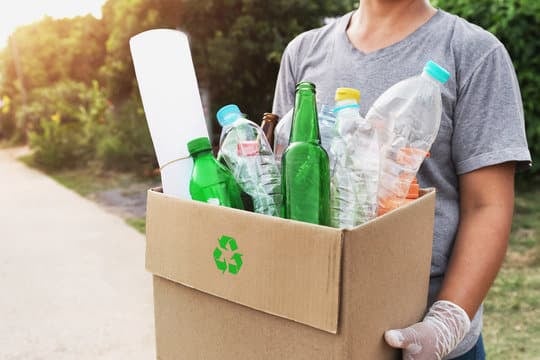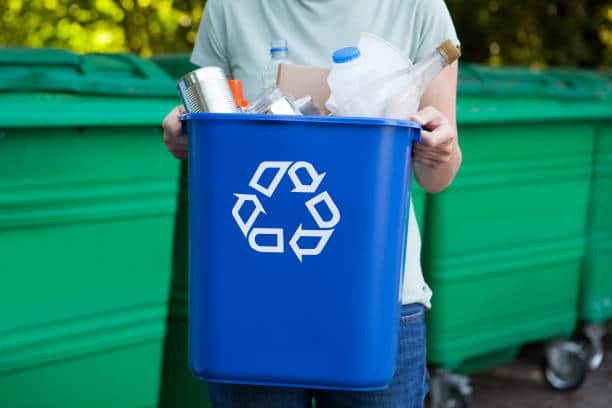Recycling is a great way to reduce pollution, energy consumption, and waste in landfills. And while a lot of us probably want to recycle, we just lack the know-how to get everything going. But those days are over because we’ve got an easy guide you can follow to start recycling at home. From here, the possibilities are endless, once you get the hang of recycling, then you can start encouraging your work, schools, and community as a whole to start recycling and reducing that carbon footprint a little bit (or a lot) at a time.

First things first, you’ll need to figure out just how you’ll be doing your recycling. Check to see what kind of program your community offers, some offer a curbside service where you simply take your goods to be recycled to the curb, much like a trash service, then for a monthly fee, your recycling will be picked up. Some recycling centers are drop-off only, which means you gather your recyclables and then drop them off at the designated drop-off site.
Next, you’ll want to get the scoop on what exactly your recycling center will pick up. For instance, some will only pick up clear glass or some won’t accept paper bags from grocery stores.
Once you know what your center will accept, it’s time to purchase some recycling bins. We recommend setting up your bins near your trash can so that you can easily ditch your recycling as you go, rather than picking through the trash later.
If you don’t hold on to plastic and/or paper shopping bags to use for other things, and your bag of bags is getting out of hand, check with your preferred grocery store because a lot of them have bag recycling programs. If not, check with your local thrift stores, farmer’s markets, libraries, etc. to see if they can ever use extra shopping bags.
If you have a lot of old electronics, check with your recycling center to see if they accept these pieces. Most of them do and this is a much safer way to get rid of “e-waste” as they call it.
As for the type of materials that most recycling centers will accept, you can count on recycling the following:

- Cans, as long as they’re empty and rinsed.
- Glass bottles and jars, as long as they’re empty and rinsed. Kitchen glassware is often not accepted as it contains certain additives that can contaminate other recyclable materials.
- Paper products like cardboard, newspaper, magazines, mail, etc., but not paper towels or napkins that can be covered in grease or food waste because both of these things can contaminate other recyclable materials as well.
- Cartons, such as food and drink cartons with their caps, as long as they’re empty and rinsed.
- Plastics #1 and #2, just look for the triangle recycling symbol to figure out which plastic is in your possession, you can also recycle plastic water bottles.
These are the most common recycled materials, if you have more unique items laying around your house such as crayons, markers, old holiday lights, eyeglasses, etc., there are a ton of programs that will recycle these items once you send them in!